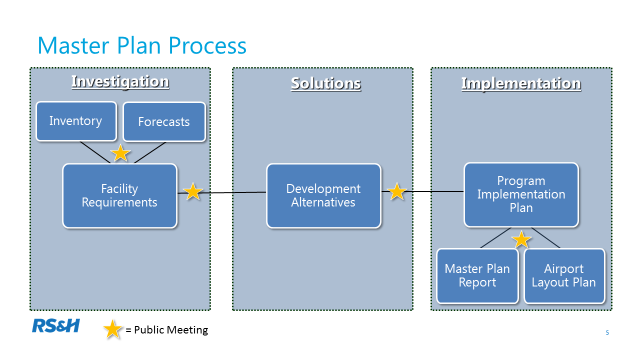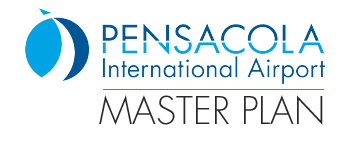About Airport Master Plans
An Airport Master Plan is at its heart an analytical tool used to develop a way for the Airport to execute its vision for the future. Airport infrastructure must meet a broad range of requirements. These include airfield design standards set by the Federal Aviation Administration; environmental regulations; and building and roadway requirements regulated by City, State and Federal government agencies. At the same time, the Airport must remain a good neighbor to the surrounding community as it fulfills the air transportation needs of the region.
Therefore, the Airport Master Planning process must analyze existing trends in aviation activity and forecast that activity for the next 20 years. This forecast must be approved by the FAA. Based on that anticipated use, the master plan compares existing facilities with forecast needs in order to identify the development projects that may be needed in the future. Those projects must then be phased to be both useful and affordable, with the understanding that changes in the marketplace may require the plan to evolve over time.
An Airport Master Plan is a complex document. Each planned development must be compatible with other planned developments and with existing conditions, and must meet strict standards for size and separation from other elements. During the master planning process, a number of alternative means of meeting forecast demand will be developed, and Airport management and public advisory committees will provide feedback needed to refine those alternatives and select a preferred development plan.
Forecasts of Aviation Activity
Aviation demand forecasts are tools for identifying facility requirements needed to accommodate existing and forecast demand. That demand is then compared to existing capacity to determine the need for additional or reduced facilities.
The Forecast is a crucial part of the Airport Master Planning process because it must justify the need to develop additional facilities. The Forecast assesses existing and anticipated future commercial airline service, as well as air taxi, general aviation, and military use. In addition, it helps identify potential changes in the types of aircraft that may be in use at the Airport, ensuring that facilities are properly sized now and in the future.
Developing the Forecast also includes considering the impacts of changes in air service. This may include developing potential scenarios of how growth may occur. The Forecast helps identify Planning Activity Levels that serve as trigger points to initiate various development projects. This approach helps prevent facilities from being constructed before they are needed, and helps ensure that necessary projects come on line before the airport experiences deterioration of safety, efficiency, or the passenger experience.
Recommended Development
At the end of the Airport Master Plan process, a recommended plan will be adopted that accommodates the strategic vision of the City, Airport and community. It will address anticipated future demand and the associated infrastructure requirements. The recommended development plan will include an implementation plan that considers how the developments will be funded.
Process

